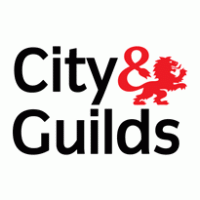
Health and Safety in the Catering Industry

Procedures
Employers in the catering industry have a duty to report and record certain details regarding accidents.
There are two ways for recording accidents.
-
Recording accidents in an accident book to comply with the Laws.
-
Accidents or incidents of a more serious nature have to be notified and reported to the appropriate enforcing authority. The regulation that imposes this requirement is the Reporting of Injuries, Diseases and Dangerous Occurrences Regulations 1995, known as RIDDOR
Emergencies
Special procedures are needed for emergencies such as serious injuries, explosion, flood, poisoning, electrocution, fire and chemical spills.
Quick and effective action may help to ease the situation and reduce the consequences. However, in emergencies people are more likely to respond reliably if they:
-
are well trained and competent
-
take part in regular and realistic practice
-
have clearly agreed, recorded and rehearsed plans, actions and responsibilities.
Fires and electrical accidents
-
Employees must carry out a fire safety risk assessment and keep it up to date.
Fires need three things to start – a source of ignition (heat), a source of fuel (something that burns) and oxygen:
-
sources of ignition include heaters, lighting, naked flames, electrical equipment.
-
sources of fuel include wood, paper, plastic, rubber or foam, loose packaging materials, waste rubbish.
-
sources of oxygen include the air around us.
Extinguishing fires
Large Combustible Cooking Risks - Wet Chemical Extinguishers
Most commercial kitchens contain large scale combustible cooking media such as cooking oils and fats.
Fire Classifications
Class A - Suitable for solid combustible materials such as wood and textiles, these materials are often found in kitchens in the form of cupboards, notice boards, waste bins and towels.
Class F - Suitable for large burning oils risks which are often found in kitchens in the form of deep fat fryers, frying pans, cooking oils. Most class F extinguishers also have a special application lance.
Advantages:
Wet chemical fire extinguishers lay a smooth cooling blanket on top of the burning liquid and help to prevent re-ignition.
Disadvantages:
Wet chemical extinguisher are not generally suitable for use on other types of fire due to its unique application.
Small Combustible Cooking Risks - Fire Blankets
Almost every kitchen, commercial or residential, will contain small scale combustible cooking media such as cooking oils and fats.
Advantages:
Fire blankets generally have the same effect on cooking media fires as a wet chemical fire extinguisher but are much lighter and more versatile.
Fire blankets can also be used to put out clothing fires by wrapping them around the person who is on fire and smothering the flames.
Disadvantages:
Fire blankets do not generally provide enough coverage for larger scale fire risks such as commercial deep fat fryers.
The user has to get a lot closer to a fire when using a fire blanket instead of an extinguisher.
General Risks - Water Mist Fire Extinguishers
Kitchens will usually contain varied fire risks such as solid combustibles, combustible gas and electrical equipment, to ensure that all these risks are covered a water mist fire extinguisher would be recommended. There is no clean-up or hazardous media used making water mist ideal for keeping the kitchen open after use.
Fire Classifications
Water mist fire extinguishers are suitable for use on class A, B, C, F and Electrical risks which are all found in a modern kitchen.
Advantages:
Using de-ionised water, clean-up is minimal and does not affect the running of the kitchen. Water mist is proven and certified for use on class A, B, C and F fires.
Disadvantages:
Although the water mist extinguishers cover most types of fire the fire ratings for each class of fire are lower than their traditional counterparts
Electrical accidents.
Electrical injuries can be caused by a wide range of voltages but the risk of injury is generally greater with higher voltages and is dependent upon individual circumstances. Torch batteries can ignite flammable substances.
Alternating current (AC) and Direct Current (DC) electrical supplies can cause a range of injuries including:
Electric shock
A voltage as low as 50 volts applied between two parts of the human body causes a current to flow that can block the electrical signals between the brain and the muscles. This may have a number of effects including:
-
Stopping the heart beating properly
-
Preventing the person from breathing
-
Causing muscle spasms
Electrical burns
When an electrical current passes through the human body it heats the tissue along the length of the current flow. This can result in deep burns that often require major surgery and are permanently disabling. Burns are more common with higher voltages but may occur from domestic electricity supplies if the current flows for more than a few fractions of a second.
Loss of muscle control
People who receive an electric shock often get painful muscle spasms that can be strong enough to break bones or dislocate joints. This loss of muscle control often means the person cannot ‘let go’ or escape the electric shock. The person may fall if they are working at height or be thrown into nearby machinery and structures.
Thermal burns
Overloaded, faulty, incorrectly maintained, or shorted electrical equipment can get very hot, and some electrical equipment gets hot in normal operation. Even low voltage batteries (such as those in motor vehicles) can get hot and may explode if they are shorted out.
People can receive thermal burns if they get too near hot surfaces or if they are near an electrical explosion. Other injuries may result if the person pulls quickly away from hot surfaces whilst working at height or if they then accidentally touch nearby machinery.
A single low voltage torch battery can generate a spark powerful enough to cause a fire or explosion in an explosive atmosphere such as in a paint spray booth, near fuel tanks, in sumps, or many places where aerosols, vapours, mists, gases, or dusts exist.
